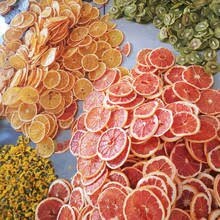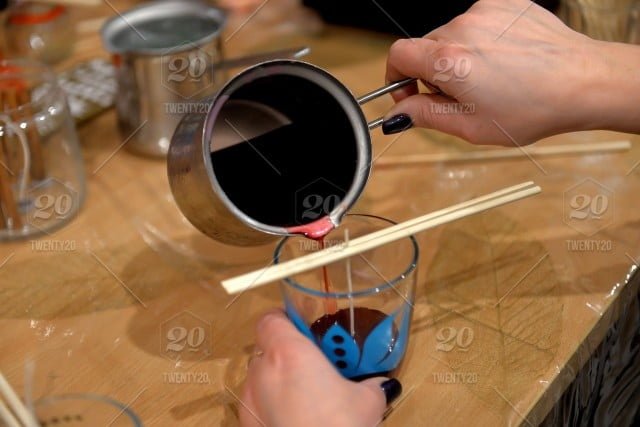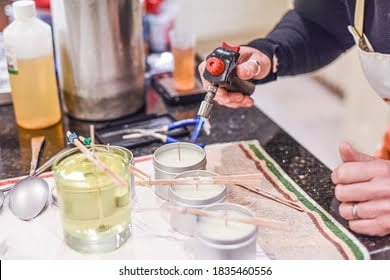The importance of a proper candle wick cannot be overstated when it comes to creating the perfect burning experience for candles. Choosing the right wick is crucial, as it directly affects how well your candle performs. Whether you’re a seasoned candle maker or just starting out, understanding the role of the wick and its impact on different types of candles and materials is essential for achieving desirable burn results.
A candle wick serves as the conduit between the flame and wax, ensuring that the wax is melted and drawn up to fuel the fire. However, not all wicks are created equal, and selecting the appropriate one can make all the difference in terms of burn time, fragrance throw, and ease of use.
With an abundance of options available in the market, from traditional cotton wicks to innovative alternatives like hemp and wooden wicks, it’s important to explore their pros and cons in order to make an informed decision.
Beyond simply choosing a type of wick, selecting the right thickness and length for your candle is equally important. Factors such as size and material play a significant role in determining which wick will yield optimum performance. Additionally, specific considerations must be made when working with fragrance holder candles, as they require careful attention to maximize scent throw.
In this article, we will guide you through various techniques for sizing your wick correctly based on different candle dimensions and designs. We will also address common troubleshooting issues related to wicks and highlight safety considerations when selecting eco-friendly options that are free from harmful additives or chemicals.
Join us as we delve into this comprehensive guide on how to make the right wick for making candles. Unlock the secrets behind crafting a perfectly burning candle that not only illuminates but also exudes your desired ambiance and fragrance throughout any space.
Understanding the Basics
When it comes to making candles, one of the most important decisions to make is choosing the right wick. The type of wick you use can greatly affect the burn time, fragrance throw, and overall quality of your candle. In this section, we will explore the basics of different types of candle wicks, including cotton, hemp, and wooden wicks.
Cotton wicks are the most commonly used type of wick in candle making. They are known for their ability to provide a clean and even burn. Cotton wicks come in various sizes and thicknesses, allowing you to find the perfect match for your specific candle size and material. They are also easy to work with and tend to be more cost-effective compared to other types of wicks.
Another popular option is hemp wicks. Hemp wicks are known for their natural properties and sustainability. They offer a slower burn rate compared to cotton wicks, which can be beneficial for longer-lasting candles. Additionally, hemp wicks have a low soot production level, making them ideal for those who prioritize clean-burning candles.
If you’re looking for something unique and visually appealing, wooden wicks might be the perfect choice for you. Wooden wicks create a crackling sound reminiscent of a cozy fireplace when lit. They also provide a wide melt pool that enhances fragrance throw, making them an excellent option for scented candles.
Ultimately, the choice between cotton, hemp or wooden wicks depends on personal preference and the specific characteristics desired in your candles. By understanding these different options, you can select the perfect type of wick that aligns with your candle-making goals.
Determining Your Candle’s Size and Material
When it comes to making the right wick for your candles, it is essential to consider the size and material of your candle. The size and material play a crucial role in determining the appropriate thickness and length of the wick for optimal burning performance.
To begin, start by measuring the diameter of your candle. This measurement will help determine the correct wick thickness. As a general rule, for every inch in diameter, you will need to increase the thickness of the wick. For example, if your candle has a two-inch diameter, you might want to consider using a medium-sized wick.
Next, consider the material of your candle. Different types of wax burn at different temperatures and rates, which can affect how well the wick performs. The type of wax commonly used includes soy, paraffin, and beeswax.
- For soy candles: Soy wax tends to have a lower melting point compared to other types of wax. Therefore, it is recommended to use cotton or hemp wicks that create a larger and hotter flame to ensure a clean and even burn.
- For paraffin candles: Paraffin wax has a higher melting point, so it is ideal to use braided cotton wicks. These wicks are designed to withstand higher temperatures.
- For beeswax candles: Beeswax is known for its natural beautiful scent when burned. It is best paired with square braided cotton or wooden wicks for an efficient burn.
Remember that these are general guidelines, and it’s always best to conduct some testing to find the perfect match between your candle size, material, and desired burn characteristics.
Wick Sizing Techniques
One of the crucial steps in making candles is ensuring that you have the right wick size for your candle. The size of the wick determines how well the candle burns, and finding the perfect match can result in a beautiful, even burn with minimal issues. In this section, we will present a step-by-step guide on how to determine the correct wick size based on the diameter of the candle.
To begin, measure the diameter of your candle container or mold. This will be an essential factor in determining the appropriate wick size. You can use a ruler or calipers to get an accurate measurement. Once you have this information, you can refer to a wick sizing chart or calculator that is specific to the type of wax you are using.
The wick sizing chart will provide recommendations on which wick size is suitable for different candle diameters. Generally, larger candles require larger wicks to ensure a full melt pool and prevent tunneling. It’s important to note that different types of wax may require different sizes of wicks due to variations in melting points and viscosity.
| Candle Diameter (inches) | Recommended Wick Size |
|---|---|
| 2-2.5 | Small Wick Size |
| 3-3.5 | Medium Wick Size |
| 4-4.5 | Large Wick Size |
It’s important to remember that these recommendations serve as a starting point, and testing is essential for achieving optimal results. After choosing a wick size based on the chart, you can make a test candle and evaluate its burn performance.
If the candle burns too slowly or creates excessive smoke, you may need to choose a larger size wick. On the other hand, if the candle burns too quickly or produces uneven melting, a smaller wick size might be more appropriate.
Finding the perfect wick size for your candle may involve some trial and error, but it’s worth investing time and effort in this process to ensure a high-quality burning experience for your candles. Understanding the basics of wick sizing and conducting proper testing will help you achieve optimal results and create candles that burn beautifully every time.
Choosing the Right Wick for Fragrance Holder Candles
Fragrance holder candles, also known as scented candles, require special consideration when it comes to choosing the right wick. The wick selection plays a crucial role in maximizing the scent throw and ensuring an optimal burn performance. Here are some factors to consider when selecting the perfect wick for fragrance holder candles.
Understanding Fragrance Holder Candles
Fragrance holder candles are designed specifically to release pleasant aromas when lit. These candles often contain fragrance oils or essential oils that are infused into the wax, providing a delightful scent experience while burning. However, the choice of wick can greatly impact how well these scents are released into the surrounding space.
Considerations for Fragrance Release
When choosing a wick for fragrance holder candles, it is important to consider the particular scent you are using. Different fragrances have varying levels of complexity and potency. A strong fragrance oil may require a more substantial wick that delivers a higher heat output to effectively release its scent. On the other hand, delicate or subtle scents may benefit from a smaller and more controlled flame.
In addition to fragrance potency, pay attention to the wax type used in your candle. Soy wax tends to have a lower melting point compared to other types such as paraffin wax. For soy-based fragrance holder candles, consider using a wick designed specifically for soy wax, as it will burn at an appropriate temperature for optimal scent throw.
Recommended Wick Types
When it comes to choosing the right wick for fragrance holder candles, cotton wicks are often a popular choice due to their versatility and ability to provide a clean burn. They work well with various types of wax and offer good scent release.
For stronger fragrances or larger diameter candles, consider using braided cotton wicks. These types of wicks have multiple strands woven together and can generate a hotter, more robust flame, allowing for better scent throw.
Another option worth exploring is the use of wooden wicks. Wooden wicks not only provide a unique aesthetic appeal but also offer good fragrance release. The crackling sound produced by burning wooden wicks adds to the overall sensory experience of the candle.
Wick Options for Unique Candle Shapes and Designs
When it comes to making candles with unique shapes or designs, choosing the right wick can be a bit more challenging. The shape and design of the candle can affect how evenly it burns, so it’s important to consider this when selecting a wick. Here are some wick options and creative solutions for ensuring an even burn throughout your unique candles.
- Wooden Wicks: Wooden wicks are a popular choice for container candles, especially those with wide openings or unusual shapes. These wicks not only provide a unique aesthetic appeal but also offer excellent burning performance. Wooden wicks create a lovely crackling sound while burning and produce a wider flame that helps distribute heat evenly throughout the candle.
- Braided Cotton Wicks: For oddly-shaped candles or those with multiple wicks, braided cotton wicks are a versatile option. These types of wicks come in different thicknesses, allowing you to choose the appropriate size for your candle. The braided design provides stability and prevents the wick from bending or drooping during burning.
- Ribbon Wicks: Ribbon wicks are ideal for candles with intricate designs or unusual shapes that require a longer-than-usual and more flexible wick. These flat braided wicks are made of fabric, giving them the ability to bend easily to fit into tight spaces without compromising their performance.
In addition to these specific types of wicks, there are some general tips you can follow when dealing with unique candle shapes and designs:
- Experiment with different sizes and types of wicks to find the best fit for your candle.
- Consider using multiple small-sized wicks instead of one large-sized one if your candle has irregular proportions or multiple areas that need to be lit.
- Test burn your unique candles before selling or gifting them to ensure they burn evenly and safely.
By choosing the right kind of wick for your unique candle shapes and designs, you can ensure an optimal burning experience and showcase the beauty of your handmade creations.
Troubleshooting Wick Issues
Identifying Common Wick-related Problems
When making candles, it is not uncommon to encounter issues with the wick that can affect the burn performance and overall experience. Some common problems include tunneling, excessive smoke, and uneven burning. Tunneling occurs when the wax around the wick does not melt evenly, leaving a tunnel-like shape in the center of the candle.
Excessive smoke can be caused by a wick that is too large or is made from low-quality materials. Uneven burning may result from an improper wick size or placement within the container. Understanding these common issues is essential for troubleshooting and finding appropriate solutions.
Troubleshooting Tips and Techniques
To address tunneling, it is important to ensure that the first burn of the candle fills the entire surface with melted wax. This initial burn sets the memory of the wax and helps prevent tunneling in future burns. If tunneling has already occurred, you can try using a heat gun or hairdryer to gently warm up the sides of the container where wax has solidified along with trimming off excess wax above the tunneled area before relighting.
Excessive smoke can be minimized by choosing a wick that is properly sized for your candle. If you notice excessive smoke while burning, extinguish the flame and trim down the wick to a shorter length. Also consider using higher-quality wicks made from natural materials, such as cotton or wooden wicks, which tend to produce less smoke compared to synthetic options.
For addressing uneven burning, it may be necessary to move or adjust the position of your wick within the container. If you notice one side of your candle burning faster than another side, try gently nudging or re-centering the wick while it is still pliable during cooling after blowing out your candle. This will help ensure an even burn throughout.
Troubleshooting wick issues is an important part of candle making to ensure a high-quality burn and optimal performance. By identifying common problems such as tunneling, excessive smoke, and uneven burning, you can take the necessary steps to address them.
Whether it’s properly melting wax during the first burn to prevent tunneling, choosing a correctly sized wick, or adjusting the wick’s position within the container for even burning, understanding and troubleshooting wick-related issues will help you create candles that provide a satisfying candle-burning experience.
Safety Considerations
The growing concern for the environment has led to an increased demand for eco-friendly products, including candles. When it comes to making eco-friendly candles, choosing the right wick is crucial in ensuring that your candles burn cleanly and do not release harmful substances into the air. In this section, we will discuss the safety considerations involved in selecting a suitable wick for eco-friendly candles.
Choosing an eco-friendly wick involves finding options that are free from harmful additives or chemicals. Traditional candle wicks may contain metals like lead or zinc, which can release toxins when burned. To avoid these potential health hazards, it is important to opt for wicks made from natural materials that are sustainably sourced.
One popular choice for eco-conscious candle makers is using cotton wicks. Cotton is a renewable resource and burns cleanly without contributing to indoor air pollution. Additionally, cotton wicks often require less trimming compared to other types of wicks, making them a convenient option for candle makers.
Another environmentally friendly option is wood wicks. Wood wicks are typically made from sustainable sources such as cherry or birch wood and give a unique crackling sound reminiscent of a cozy fireplace. However, wood wicks may require more frequent trimming and often have a larger flame compared to cotton or other traditional wicks.
It’s essential to note that while opting for an eco-friendly candle wick is important, it should also be appropriate for the specific type of candle you are making. Consider factors such as candle size, material, and fragrance oils (if used) when selecting the perfect wick to ensure optimal burning performance.
To summarize, choosing an eco-friendly wick contributes to a cleaner and healthier burning experience while reducing our impact on the environment. Whether you prefer cotton or wooden options, there are various choices available that align with sustainable practices. By selecting the right eco-friendly wick for your candles, you can craft beautiful products without compromising on safety or quality.
| Eco-Friendly Wick Options | Benefits |
|---|---|
| Cotton Wicks | – Made from a renewable resource
|
| Wood Wicks | – Sustainably sourced from wood such as cherry or birch
|
Conclusion
In conclusion, choosing the right wick for your candle is crucial in ensuring a perfect burning experience. Throughout this article, we have explored the different types of wicks available in the market, discussed considerations for determining the appropriate wick size and material based on candle size and wax type, and provided solutions for various candle shapes and designs. We have also addressed common wick-related issues and safety considerations for eco-friendly candles.
It is important to remember that selecting the right wick is a personal journey of experimentation. Each type of candle and wax combination may require a different wick to achieve optimal burn performance. Therefore, we encourage you to try out different options and adjust accordingly until you find your perfect match.
By crafting the perfect wick for your candle, you can enhance not only its burn time but also its fragrance throw, even burn performance, and eco-friendliness. A well-chosen wick ensures a more enjoyable and satisfying candle-burning experience overall.
So go ahead and explore the world of candle wicks. Experiment with different types, sizes, and materials to create candles that are personalized to your preferences. Keep in mind the tips and recommendations provided throughout this article as guidance.
Remember that every element of a candle plays a role in its performance, but the wick holds significant power in crafting an exceptional burning experience. Happy candle making.
Frequently Asked Questions
How do I know what wick to use for my candles?
When determining what wick to use for your candles, there are several factors to consider. The size and diameter of your candle will play a crucial role in selecting the appropriate wick. A general rule of thumb is that a larger candle requires a thicker wick to ensure an even burn.
Additionally, the type of wax you are using can influence wick selection. Different waxes have different melting points and densities, which can affect how quickly the candle burns. It is recommended to consult a wick manufacturer’s guide or reference chart that provides recommendations based on your specific candle size, wax type, and desired burn time.
How do you make a homemade candle wick?
Making a homemade candle wick allows for customization and creativity in crafting unique candles. To create your own homemade wick, you will need cotton string or twine as it is an ideal material due to its absorbency and heat resistance properties. Start by cutting the cotton string slightly longer than the desired length of your finished candle wick.
To prime the wick and make it burn better, soak it in a mixture of borax and salt water solution for at least 12 hours before allowing it to dry thoroughly. Once dried, you can dip or coat the primed string in beeswax for added strength and stability before attaching it to a metal sustainer tab at one end.
What should a candle wick be made of?
Candle wicks should typically be made from materials that promote efficient burning while minimizing soot production and excessive smoke emission. Cotton is commonly used as it is highly absorbent, doesn’t produce much soot when burned properly, and tends to provide an even flame. Other natural fibers like hemp or linen can also be used as they possess similar qualities to cotton.
However, synthetic fibers should generally be avoided as they may release harmful chemicals when burned. Ultimately, choosing a safe and suitable material for your candlewick will depend on factors such as personal preference, environmental considerations, desired burn characteristics, and the type of wax being used.

Welcome to my candle making blog! In this blog, I will be sharing my tips and tricks for making candles. I will also be sharing some of my favorite recipes.





